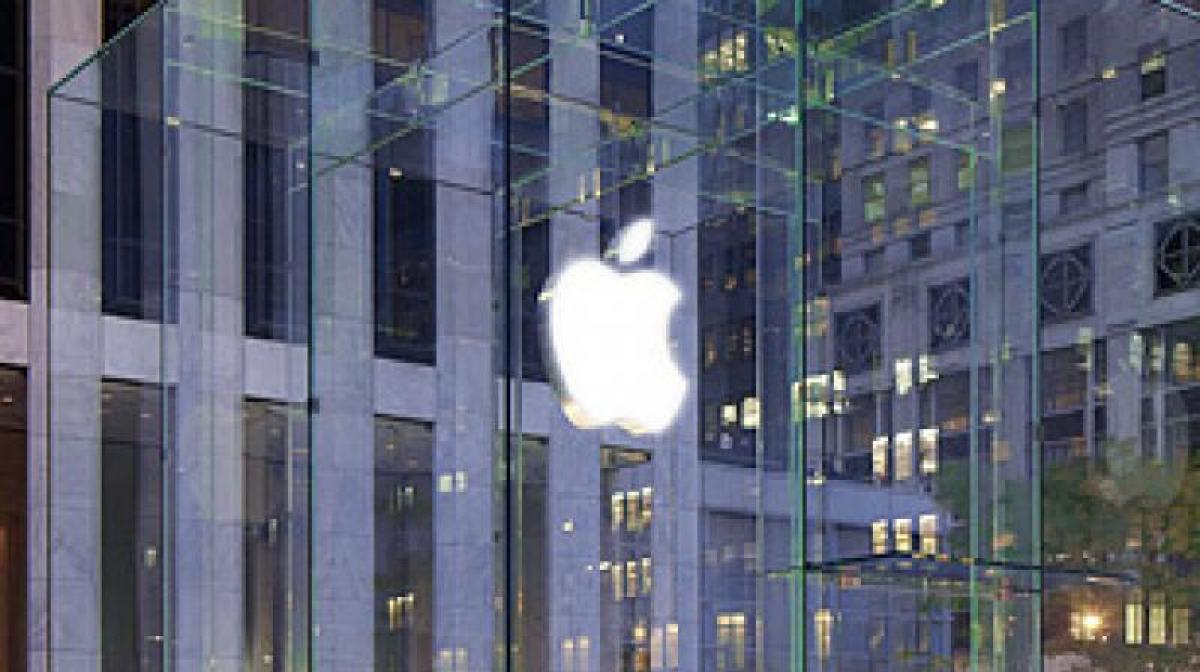Live
- Over 7,600 Syrians return from Turkiye in five days after Assad's downfall: minister
- Delhi BJP leaders stay overnight in 1,194 slum clusters
- Keerthy Suresh and Anthony Thattil Tie the Knot in a Christian Ceremony
- AAP, BJP making false promises to slum dwellers for votes: Delhi Congress
- 'Vere Level Office' Review: A Refreshing Take on Corporate Life with Humor and Heart
- Libya's oil company declares force majeure at key refinery following clashes
- Illegal Rohingyas: BJP seeks Assembly session to implement NRC in Delhi
- Philippines orders full evacuation amid possible volcanic re-eruption
- Government Prioritizes Welfare of the Poor, says Dola Sri Bala Veeranjaneyaswamy
- Two Russian oil tankers with 29 on board damaged due to bad weather
Just In

The European Union is drawing up guidelines on how much patent holders should charge for their technologies, a thorny issue that pits Apple and other users against Qualcomm and Ericsson.
The European Union is drawing up guidelines on how much patent holders should charge for their technologies, a thorny issue that pits Apple and other users against Qualcomm and Ericsson.
Trillions of dollars in sales are at stake as regulators ponder whether a fridge maker should pay a different rate for crucial patents than a carmaker, or whether a flat, fixed rate would be fairer.
The patent fee model used by world No. 1 smartphone chip designer Qualcomm predominates in the tech industry and is based on how much value a technology adds to a product, but is opposed by Apple and others in Silicon Valley.
Other models are in use and the EU aims to set a uniform one for Europe, opening a new front in a global dispute that has already seen multiple lawsuits between Apple and Qualcomm.
Antti Peltomaki, deputy director general at the European Commission, told a conference last week that the EU hopes to finalise its guidelines by the end of the year. They will not be legally binding but could provide a basis if the EU executive decides to enact rules in future.
The move is part of the bloc’s broader push to set new rules of the road for internet-connected devices beyond just computers and smartphones to cover cars, home automation and energy devices, aiming to ensure job creation and other economic benefits in the so-called Internet of Things (IoT) era.
Qualcomm’s patent fee model is based on the widely used so-called “fair, reasonable and non-discriminatory” (FRAND) licensing model. The European Commission, however, has yet to make a final decision on which technology patent fee model it favours.
Silicon Valley tech giants have sided with Apple, as have big Asian electronics makers who work for Apple, including Foxconn Technology Group.
Qualcomm, which holds what many experts see as the world's most lucrative smartphone patent portfolio, is backed by major mobile phone and network patent holders Ericsson and Nokia.
Apple, the automotive industry and product makers say a fairer approach is to link royalties to the cost of the smallest saleable unit.
“It is not reasonable to charge more for use of the very same component in a Mercedes versus a Hyundai or a car versus a bicycle. This is discriminatory based on price of the end product, both within and outside of a particular product category,” Apple said of Qualcomm’s model in a May submission to the European Commission.
Apple and Qualcomm declined to comment for this story.
Industry estimates show IoT systems could represent a market of more than $11 trillion per year by 2025.
“There’s a lot of potential value at stake,” said Matthew Hunt, competition attorney with the law firm Bristows in London.
BALANCING ACT
Qualcomm’s royalty approach, known as use-based or value-based, is an important source of profits for other mobile pioneers such as Ericsson and Nokia.
Ericsson, once the world’s biggest mobile phone and network equipment maker, has fallen on hard times in the past decade in the face of stiff global competition. Still, with more than 42,000 patents giving it the largest number of mobile technology patents, it stands by the value-based licensing model.
“We need to be able to be flexible to differentiate the price. Flexibility is absolutely necessary,” Patrick Hofkens, Ericsson’s director of intellectual property rights policy, said.
Hofkens said that charging high royalty rates discourages product makers from adopting new innovations, while setting royalty rates too low undermines new technology developers from licensing their patents to industry standards bodies, which enable mass markets to take off.
“Price differentiation allows for lower prices for applications that do not use the patented technology as intensively as others,” the Ericsson executive said.
The European Commission has a tough balancing act, said Bristows’ Hunt.
“For any model, the main difficulty is going to be how to determine a fair rate. This has proven complicated enough in the mobile telecoms industry already, and it’s only going to get harder with new IoT enabled products,” he said.
Qualcomm’s approach sets royalty rates based on the proportion of ‘added value’ the patented technology provides to the completed product.
Its previous patent licensing deal with Apple, for example, allowed it to take a percentage of the overall selling price for the iPhone, in exchange for supplying it with modem chips.
Lobbying group the App Association (ACT), whose sponsors include Apple, Facebook, Intel and Microsoft, urged the Commission not to rush into setting new guidelines.
IP Europe, another lobbying group whose members include Ericsson, Airbus, Nokia and Orange, says patent holders deserve a fair compensation.
“When they are contributors to a platform, they have expectations of fair remuneration,” the group’s executive secretary Francisco Mingorance said.

© 2024 Hyderabad Media House Limited/The Hans India. All rights reserved. Powered by hocalwire.com







